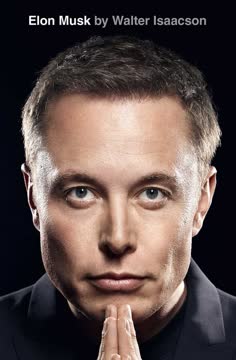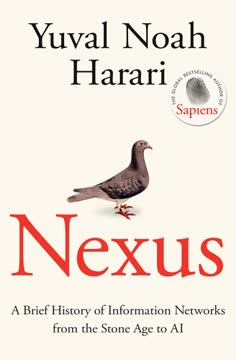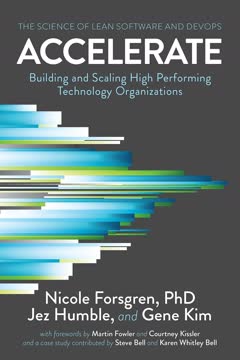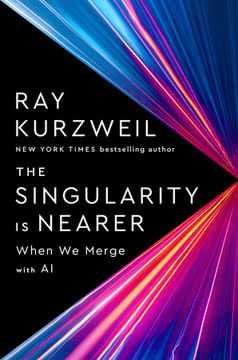Key Takeaways
1. The Longevity Revolution: Living to 200 is within reach
"I believe we are starting an era where we will go from the practice of medicine to the science of medicine."
Scientific breakthroughs are rapidly changing our understanding of aging and longevity. The convergence of genetic engineering, regenerative medicine, artificial intelligence, and advanced diagnostics is paving the way for humans to live far beyond current life expectancies.
Longevity escape velocity, a concept introduced by David Gobel and Aubrey de Grey, suggests that soon, each year of scientific progress will add more than one year to our average life expectancy. This creates the possibility of "outrunning" death through continuous advances in medical technology. While living to 200 may seem far-fetched, many experts believe that the first person to reach this age is already born.
Key developments driving the Longevity Revolution:
- Human Genome Project completion and affordable gene sequencing
- CRISPR and other gene-editing technologies
- Stem cell therapies and organ regeneration
- Artificial intelligence in drug discovery and personalized medicine
- Nanotechnology and advanced diagnostics
2. Redefining aging: From inevitable decline to treatable condition
"Aging may not have to proceed in one single direction."
Paradigm shift: Aging is increasingly viewed not as an inevitable process but as a treatable condition. This change in perspective is driving research and investment into interventions that can slow, halt, or even reverse the aging process.
Scientists have identified several "hallmarks of aging," including genomic instability, telomere attrition, and cellular senescence. By targeting these hallmarks, researchers aim to develop therapies that can extend both lifespan and healthspan – the period of life spent in good health.
Key concepts in the new understanding of aging:
- Epigenetic clocks: Measuring biological age beyond chronological age
- Sirtuins and NAD+: Key players in cellular health and longevity
- Senescent cells: "Zombie" cells that contribute to aging
- Hormesis: How mild stress can improve cellular resilience
3. DIY diagnostics: Early detection is key to longevity
"DIY diagnostics will become as ubiquitous as automobiles, air-conditioning, and the best medical treatments are to us today."
Empowering individuals with accessible, affordable, and continuous health monitoring is crucial for preventing and treating diseases early. The future of diagnostics lies in wearable, implantable, and ingestible devices that can detect potential health issues long before symptoms appear.
These technologies will create an "Internet of Body" (IoB), constantly collecting and analyzing health data. This shift from reactive to proactive healthcare could dramatically reduce premature deaths from conditions like cancer, heart disease, and stroke.
Emerging DIY diagnostic technologies:
- Smart watches with ECG and blood oxygen monitoring
- Liquid biopsies for early cancer detection
- Microbiome analysis for gut health and disease risk
- Continuous glucose monitors for diabetes management
- AI-powered skin cancer detection apps
4. Precision medicine: Tailoring treatments to individual genetics
"We are starting an era where we will go from the practice of medicine to the science of medicine."
Personalized healthcare based on an individual's unique genetic makeup, lifestyle, and environment is becoming a reality. Precision medicine aims to provide the right treatment to the right patient at the right time, moving away from the one-size-fits-all approach.
This approach relies heavily on genetic sequencing, big data analytics, and artificial intelligence to identify the most effective treatments for each patient. As costs decrease and technology improves, precision medicine is expected to become the standard of care.
Key components of precision medicine:
- Whole genome sequencing
- Pharmacogenomics: Tailoring drug treatments to genetic profiles
- AI-powered analysis of medical literature and patient data
- Targeted therapies for cancer and other diseases
- Continuous monitoring and adjustment of treatments
5. Genetic engineering: Editing our way to longer lives
"Every disease that's with us is caused by DNA. And every disease can be fixed by DNA."
CRISPR and beyond: Gene-editing technologies are revolutionizing our ability to treat genetic diseases and potentially enhance human capabilities. As these tools become more precise and accessible, they open up possibilities for eliminating hereditary conditions, boosting immunity, and even inserting "longevity genes."
While ethical concerns remain, genetic engineering holds immense promise for extending human lifespan and healthspan. From curing single-gene disorders to more complex interventions, this field is rapidly advancing.
Applications of genetic engineering for longevity:
- Eliminating hereditary diseases
- Enhancing cellular repair mechanisms
- Boosting the immune system
- Inserting genes associated with extreme longevity
- CAR T-cell therapy for cancer treatment
6. Regenerative medicine: Replacing and rejuvenating body parts
"Growing new organs of the body as they wear out, extending the human lifespan? What's not to like?"
Biological renewal: Regenerative medicine aims to replace or regenerate human cells, tissues, or organs to restore normal function. This field encompasses stem cell therapies, tissue engineering, and organ regeneration, offering the potential to repair or replace damaged parts of the body.
As these technologies advance, it may become possible to maintain the body indefinitely by replacing worn-out components, much like maintaining a car. This could dramatically extend both lifespan and healthspan.
Promising areas in regenerative medicine:
- 3D-bioprinted organs
- Lab-grown tissues for transplantation
- Stem cell therapies for various conditions
- Gene therapies to stimulate tissue regeneration
- Xenotransplantation using genetically modified animal organs
7. Longevity in a pill: Pharmaceutical approaches to extending life
"NAD+ is the closest we've gotten to a fountain of youth."
Drug interventions: Researchers are exploring various compounds that may slow or reverse the aging process. These "longevity pills" target specific hallmarks of aging or mimic the effects of caloric restriction, a well-established method for extending lifespan in various species.
While no single pill has yet been proven to dramatically extend human lifespan, several candidates show promise in animal studies and early human trials. As our understanding of aging mechanisms improves, more targeted and effective interventions are likely to emerge.
Promising longevity-enhancing compounds:
- Metformin: A diabetes drug with potential anti-aging effects
- Rapamycin: An immunosuppressant that may extend lifespan
- NAD+ boosters: Compounds that support cellular energy production
- Senolytics: Drugs that clear senescent cells
- Resveratrol and other sirtuin activators
8. The ethics of immortality: Addressing societal challenges
"We choose to go to the moon . . . and do the other things, not because they are easy, but because they are hard; because that goal will serve to organize and measure the best of our energies and skills."
Societal implications: As radical life extension becomes a possibility, we must grapple with its potential impact on society, economics, and the environment. Concerns range from overpopulation and resource scarcity to widening inequality and the meaning of life itself.
Addressing these challenges will require careful consideration and proactive policy-making. However, the author argues that many of these concerns are based on misconceptions and that extreme longevity could actually lead to more responsible, forward-thinking behavior.
Key ethical and societal considerations:
- Environmental sustainability
- Economic systems and retirement
- Healthcare access and inequality
- Population dynamics and reproduction
- The nature of human identity and purpose
9. Lifestyle choices: Immediate steps to increase lifespan
"Let food be thy medicine, and let medicine be thy food."
Taking action now: While cutting-edge technologies promise future breakthroughs, there are many evidence-based steps individuals can take today to increase their chances of living longer, healthier lives. These lifestyle choices can help bridge the gap until more advanced longevity interventions become available.
By adopting these habits, individuals can potentially add years to their lives and improve their overall health. The goal is to "live long enough to live forever" – surviving until more advanced life-extension technologies become available.
Key lifestyle recommendations for longevity:
- Regular health check-ups and early detection
- Quitting smoking and limiting alcohol consumption
- Adopting a plant-based, Mediterranean-style diet
- Practicing intermittent fasting or caloric restriction
- Engaging in regular physical activity
- Prioritizing sleep and stress management
- Cultivating strong social connections
- Maintaining a positive, purpose-driven outlook
Last updated:
FAQ
What's The Science and Technology of Growing Young about?
- Focus on Longevity: The book delves into scientific advancements and technologies aimed at extending human lifespan and improving health, with the potential for living to 150 years or more.
- Practical Advice: Sergey Young provides actionable insights on leveraging current knowledge and technologies to enhance health and longevity today.
- Future of Aging: It presents a vision where aging can be reversed or significantly slowed through breakthroughs like genetic engineering and regenerative medicine.
Why should I read The Science and Technology of Growing Young?
- Cutting-Edge Research: The book compiles the latest findings in biomedicine and gerontology, making it a valuable resource for health and longevity enthusiasts.
- Empowering Knowledge: Readers gain insights into taking control of their health and longevity, potentially adding years to their lives.
- Inspiring Vision: Sergey Young shares an optimistic outlook on aging, encouraging readers to embrace the possibilities of living longer, healthier lives.
What are the key takeaways of The Science and Technology of Growing Young?
- Longevity Revolution: The book outlines a paradigm shift in understanding aging and health, emphasizing that living longer and healthier is achievable.
- Technological Breakthroughs: It highlights four major technological shifts—genetic engineering, regenerative medicine, health-care hardware, and health data intelligence.
- Personal Action Steps: Young provides ten actionable habits and choices to improve health and longevity, such as regular diagnostics and lifestyle changes.
What are the best quotes from The Science and Technology of Growing Young and what do they mean?
- “You can live long enough to live forever.”: This encapsulates the theme that advancements in science may allow us to achieve a form of biological immortality.
- “Aging may not have to proceed in one single direction.”: Suggests that aging is not fixed and interventions may reverse or slow its effects.
- “The first person to live to 150 has already been born.”: Emphasizes the belief that reaching extreme ages is likely for those born today.
What is the Longevity Revolution mentioned in The Science and Technology of Growing Young?
- Definition: Refers to advancements in science and technology changing our understanding of aging and health, suggesting aging can be managed or reversed.
- Myths Debunked: Addresses myths about longevity, such as living longer means living less healthily, countered with scientific evidence.
- Technological Shifts: Outlines four key technological shifts driving this revolution: genetic engineering, regenerative medicine, health-care hardware, and health data intelligence.
How does The Science and Technology of Growing Young define aging?
- Loss of Information: Aging is described as a loss of information, particularly in the epigenome, which can be altered by lifestyle and environmental factors.
- Hallmarks of Aging: Introduces the "ten hallmarks of aging," including genomic instability and mitochondrial dysfunction, providing a framework for understanding aging.
- Biological vs. Chronological Age: Emphasizes the distinction between chronological age and biological age, suggesting interventions can reduce biological age.
What are some practical steps I can take now to improve my longevity according to The Science and Technology of Growing Young?
- Regular Health Monitoring: Encourages adopting DIY diagnostics, like wearable health devices, to monitor health continuously and catch issues early.
- Healthy Lifestyle Choices: Outlines ten habits, including a balanced diet, regular exercise, and mindfulness practices, impacting health and longevity.
- Engagement with Technology: Embracing new health technologies, such as telemedicine and personalized health data, empowers individuals to take charge of their health.
What role does genetic engineering play in longevity according to The Science and Technology of Growing Young?
- Gene Editing Technologies: Discusses CRISPR-Cas9 and other technologies allowing precise DNA alterations, potentially correcting genetic defects and enhancing longevity.
- Gene Therapy: Highlights gene therapy's potential to treat or cure hereditary diseases, as demonstrated in cases like Victoria Gray's CRISPR treatment for sickle-cell anemia.
- Longevity Genes: Explores the concept of longevity genes, which may be targeted to promote longer, healthier lives, emphasizing ongoing research.
How does precision medicine differ from traditional medicine as described in The Science and Technology of Growing Young?
- Personalized Approach: Tailors treatments based on an individual's genetic makeup, lifestyle, and health data, contrasting with traditional one-size-fits-all medicine.
- Data-Driven Decisions: Emphasizes AI and big data's role in precision medicine, allowing for more accurate diagnoses and treatment plans specific to each patient.
- Proactive Health Management: Focuses on preventing diseases before they occur, using continuous monitoring and personalized interventions.
What is the significance of metformin in The Science and Technology of Growing Young?
- Diabetes Treatment: Metformin is widely used to manage diabetes by lowering blood sugar levels, connecting traditional herbal remedies with modern medicine.
- Longevity Potential: Research indicates metformin may extend lifespan and healthspan, with studies showing improved physical stamina and reduced inflammation.
- Clinical Trials: Discusses ongoing trials, like the TAME trial, investigating metformin's effects on aging, potentially recognizing it as a longevity drug.
How does The Science and Technology of Growing Young address the concept of cellular senescence?
- Definition of Cellular Senescence: Described as cells stopping division and entering a "zombie state," contributing to age-related diseases.
- Senolytics: Introduces senolytic drugs targeting and eliminating senescent cells, potentially reversing age-related conditions.
- Human Trials: References clinical trials exploring senolytics' effects on human health, indicating a promising avenue for future longevity treatments.
What role does artificial intelligence play in the future of longevity, according to The Science and Technology of Growing Young?
- Drug Discovery: AI revolutionizes drug discovery by identifying potential longevity drugs more efficiently, reducing time and cost.
- Personalized Medicine: Analyzes vast health data to create personalized treatment plans, enhancing medical interventions' effectiveness.
- Predictive Analytics: Highlights AI's potential to predict health risks and outcomes, allowing for proactive health management and transforming aging and disease prevention.
Review Summary
The Science and Technology of Growing Young receives mixed reviews. Many praise its optimistic outlook on longevity and accessible explanations of cutting-edge technologies. Readers appreciate Young's unique perspective as an investor in longevity startups. However, some criticize the book for lacking depth, being overly optimistic, and rehashing common health advice. Critics also note potential ethical concerns and accessibility issues with longevity advancements. Despite these critiques, many readers find the book thought-provoking and inspiring, offering a glimpse into a future where extended lifespans may become a reality.
Similar Books










Download PDF
Download EPUB
.epub digital book format is ideal for reading ebooks on phones, tablets, and e-readers.




